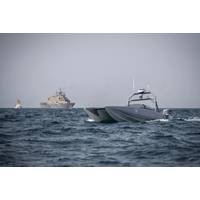
Unmanned Maritime Systems Development Accelerates
There is little question that world militaries see the value of unmanned systems to complement their manned counterparts. The wars in Iraq and Afghanistan accelerated the development of unmanned aerial systems and unmanned ground systems to meet urgent operational needs. Now, there is increasing interest in unmanned surface systems, resulting in their placement on an accelerated development path.Like their air and ground counterparts, these unmanned surface systems are valued because of their ability to reduce the risk to human life in high threat areas, to deliver persistent surveillance over areas

U.S. Navy: Unmanned Maritime Systems Development Accelerates
There is little question that world militaries see the value of unmanned systems to complement their manned counterparts. The wars in Iraq and Afghanistan accelerated the development of unmanned aerial systems and unmanned ground systems to meet urgent operational needs. Now, there is increasing interest in unmanned surface systems, resulting in their placement on an accelerated development path.Like their air and ground counterparts, these unmanned surface systems are valued because of their ability to reduce the risk to human life in high threat areas, to deliver persistent surveillance over areas
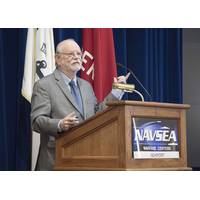
Naval War College Professor Shares History, Breadth of Unmanned Systems
ways to combat potential threats has been difficult.“One of the things we’re concerned about is swarms of drones,” Jackson said. “What if someone sends dozens or hundreds of drones against you? It is a very big challenge.”There are a few proven ways to counter unmanned aerial systems. Sky Wall uses a compressed air canister and a viewfinder to shoot a projectile that splits open and drops a net with a parachute attached to safely bring down a drone. Dronekiller uses electronics to jam a drone’s control signal to force it off target or to land. A pitfall of using electronic
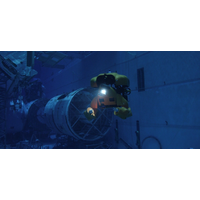
Nauticus Robotics Hires Bohan as COO
serving as Vice President, Division Manager – Mission Operations and Infrastructure Protection Division. In this most recent role, Bohan oversaw day-to-day operations of over 850 employees in an organization providing electronic and integrated security systems including counter-small unmanned aerial systems.“It is a tremendous honor to have Donnelly join the Nauticus team and I am especially thrilled to work with such a talented individual as we embark on our significant growth trajectory and planned entrance into the public markets,” said Nicolaus Radford, Chairman and Chief Executive

Richard W. Spinrad, Ph.D.: MTR's 2021 #1 Ocean Influencer
quality and the accuracy of our hurricane forecast. If you look at what we’re doing with surface vehicles, we’re now realizing we might be able to complement the traditional approaches to fishery stock assessments using acoustic sensors put on these surface vehicles. In the air, uncrewed aerial systems can collect high-resolution imagery. They can even collect DNA from the breath of a whale to give us some sense of the health of that particular animal. So in any part of the environment, above the water or on the surface or underneath the surface, these uncrewed systems are truly proving to
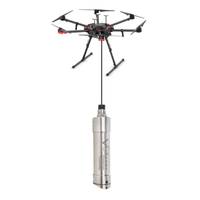
Send in the Drones: First aerial drone-dipping sensors take off with Valeport
from difficult-to-access and dangerous waters as well as restricted-access waters, such as reservoirs.THURN QuickDip integrated drone-based system uses a Valeport sensor, a cable, a rotocopter drone and UgCS SkyHub/True Terraine Following (TTF) hardware - from leading software developer for unmanned aerial systems SPH Engineering. THURN’s integration of hardware and software allows the drone to fly at an accurate fixed height over water using a map-based pre-programmed autonomous survey pattern and dip the Valeport sensor into the water to take readings.Photo: Valeport/THURN“We&rsquo
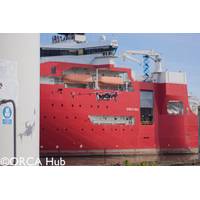
R&D: Robotics Advances Inside the ORCA Hub
25 years.”The Imperial College London drone demonstrating autonomous UAV sensor placement at the ORE Catapult facility in Blyth. The drone is equipped with a winch-tethered magnet and passive wheels capable of perching on, and sliding along, both vertical and horizontal surfaces.Moving topside, aerial systems have become a part of the day-to-day offshore inspection toolbox, but is there more they can do, and how can that be achieved?Ashutosh Choubey, Aerial Robotics Lab Program Manager at Imperial College London: “The development of aerial robots for the offshore industry is increasingly
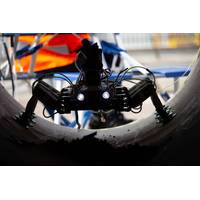
Robotics: Autobots Transform in the Offshore Energy Sector
trialing System T, from Surface Dynamics, a portable robotic surface treatment system for sand or hydro-blasting ballast and other tanks. Photo from Equinor.A raft of new systemsStill, there are plenty of ongoing projects. The OGTC has been working with drone firms Air Control Entech and Fly Logix on aerial systems. Air Control Entech developed three drones – one for flying in higher winds, one with laser scanning capability, and one with ultrasonic non-destructive testing capability, says Bell. In its first project with the OGTC, Fly Logix’s worked on a drone capable of “beyond visual
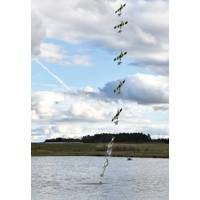
Drones for Coastal Enviro Management
Unmanned aerial systems (UAS), commonly called drones, have been making increasing impacts in the maritime domain. As the capabilities of these platforms have increased, so have their contributions to maritime science, defense, and industry. Recognizing this, the Alliance for Coastal Technologies (ACT) and the Northeastern Regional Association of Coastal and Ocean Observing Systems (NERACOOS), with support from the U.S. Integrated Ocean Observing System (IOOS), convened a workshop on Practical Uses for Drones to Address Management Problems in Coastal Zones at the Wells National Estuarine Research



 February 2024
February 2024





